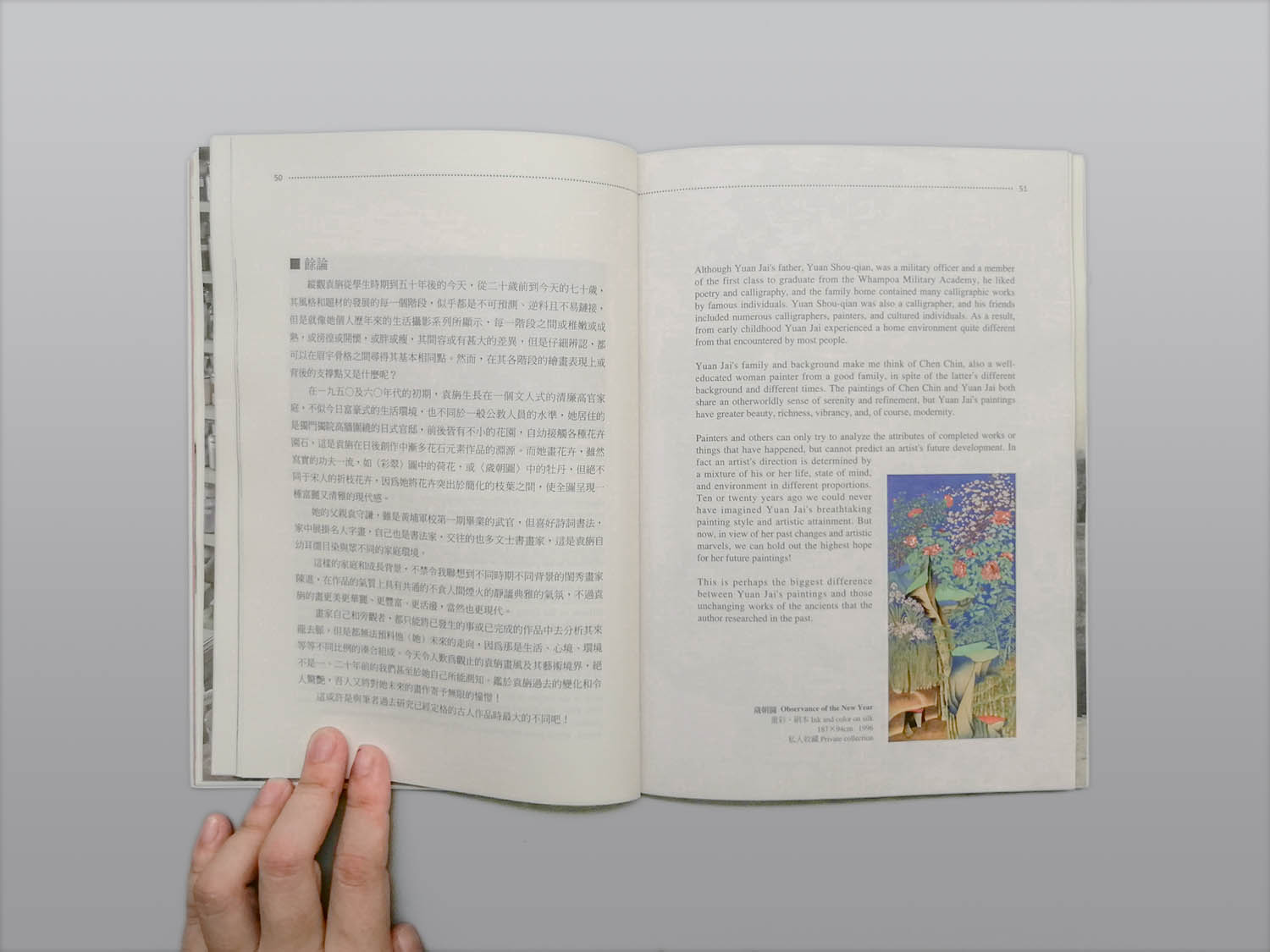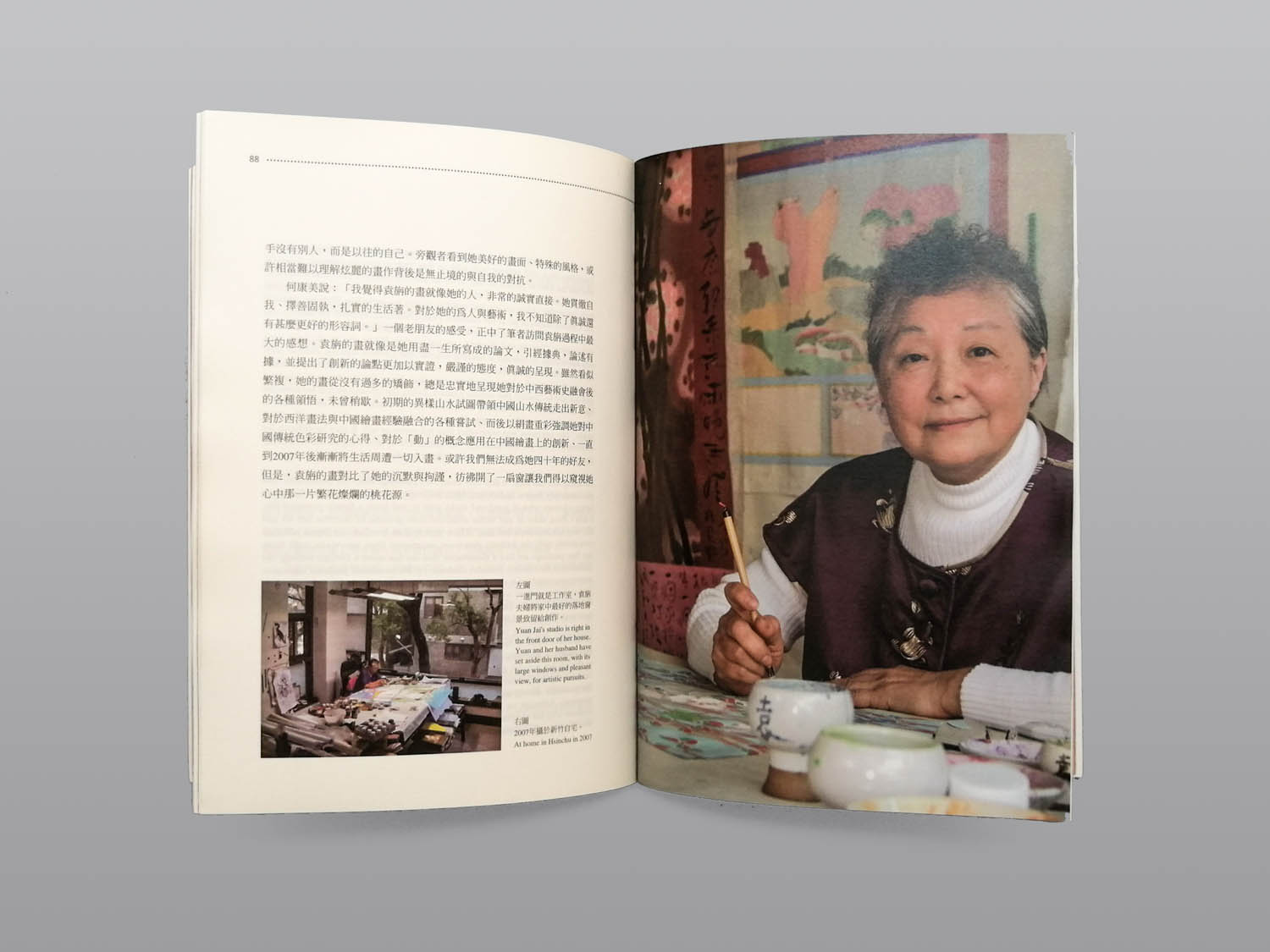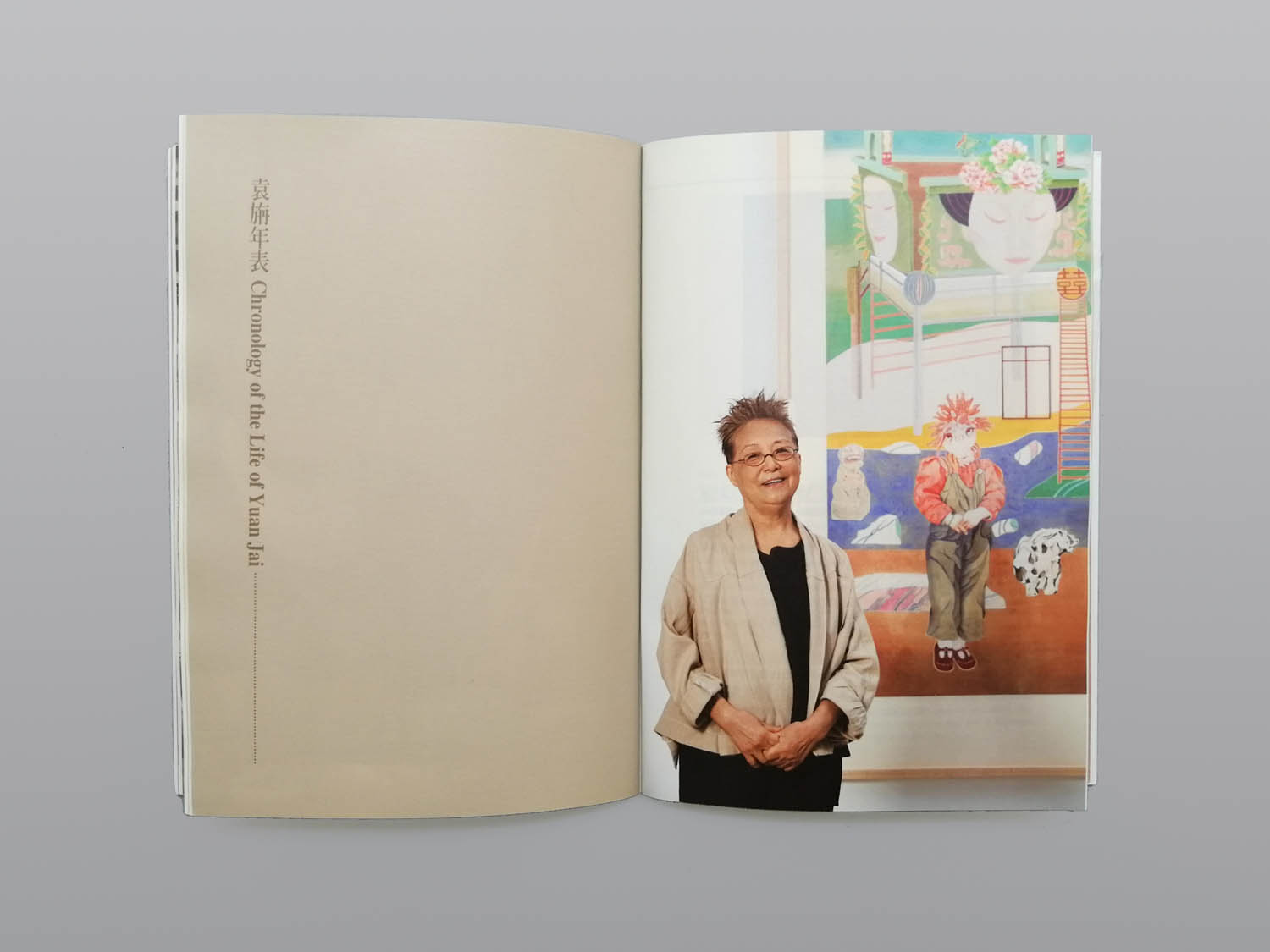The Forking Paths
WeChat Subscription Account
Customer Service
WeChat: theshopwechat
Email: mail@theshop.art
Online time:
(GMT+8) 11:00-18:00 Mon.- Fri.
Except for CN national holidays

Yuan has born into a family of art and culture. She grew up immersed in Chinese calligraphy and painting. In 1958, she entered the Department of Art, Taiwan Provincial Normal University (today’s National Taiwan Normal University), where she laid a solid foundation of Chinese painting by learning from many masters, such as Pu Hsin-yu and Huang Chun-pi. After graduation, she went to Europe for further studying. After she obtained her master degree in Archeologie et Histoire D’art from Université Catholique de Louvain in Belgium, she entered Belguim’s Institut Royal du Patrimoine Artistique and learned professional preservation and conservation of cultural relics. Yuan returned back to Taiwan in 1968 and joined the Department of Antiquities of the National Palace Museum. She was in charge of establishing the Office of Technology, the first office dedicated to conservation of cultural relics in Taiwan. Yuan retired in 2001. She defined her years at the National Palace Museum as a period of “dedication and re-learning,” in which she contributed what she had learned abroad to the museum and also had the opportunity of viewing masterpieces of Chinese ancient and modern arts. Yuan did not resume her painting until the age of 45. More than two decades of no painting had given Yuan rich reserves of creative energy to develop her unique Chinese ink painting different from that of traditional ink painting.
She once said, “I started late. Therefore, I just use whatever ideas I can think of one after another in the hope of starting some interesting and inspiring discussions.” From her early Amazing landscape series, strong-color Observance of the New Year in meticulous brushwork, Affinity series inspired by layers of ancient silk fabrics from the Song Dynasty to the sense of dynamism used to break the static nature of Chinese painting, and to her most recent works, such as the Rock, Bronze Ware, and Home series, she explores more possibilities of subject matters and colors in Chinese painting in addition to her innovative experiments of the expression methods. In her words, “Strong colors are the colors of this era. All the bright colors, such as colors of shining neon lights on the the street and colors of strong contrast found on billboards, should also be seen in the paintings.” Elements from traditional Chinese painting and flamboyant modernity of Yuan’s art. Yuan Jai’s art unquestionably manages to bridge the yawning gap between Chinses traditional painting and Western art, and she has laid out a contemporary art world for the Chinses of the 21st century.
Addressing the age of great reform, she relies on the refinement and gentleness of a Chinese woman of culture to fuse orthodox Chinese painting with a variety of ancient and modern, and Chinese and foreign elements, and she has digested the fervor of the West’s great reforms. Yuan Jai’s landscape paintings will be seen as moment of innovative opportunity in the history of painting.
Yuan Jai’s works are indeed full of pleasing colors that seem as if they have been transported from the immortal realm of the Daoists to the mundane world. Her colors and spatial layouts successfully fuse folk elements with exotic aesthetics, and can charm both refined and common tastes. I even believe that her artistic development can serve as a model for regional cultural creativity; she absolutely does not mix elevated tastes, petty bourgeois tastes, and mass tastes in a clumsy manner, but rather employs a highly rational, systematic, mature process to create novel forms.









Prefaces
Preface 4
A Heart Enflamed 10
About this Exhibition 14
Essays
Shaping a New Space: The Rational Reform of Yuan Jai’s New Landscape Painting 25
Growing More Adept at Refining the Art of Versification with Age: Yuan Jai’s Updating of Traditional Chinese Painting 35
A Visionay Mind: A Reading Note on the Art of Yuan Jai 53
A Tranquil Revolution: Yuan Jai’s Magnificent, Turbulent, yet Calm Life 73
Chronology of the Life of Yuan Jai 91
A Glimpse of the Exhibition 117
Acknowledgments 127
The Forking Paths
WeChat Subscription Account
Customer Service
WeChat: theshopwechat
Email: mail@theshop.art
Online time:
(GMT+8) 11:00-18:00 Mon.- Fri.
Except for CN national holidays
Size: 15×21 cm
Pages: 127
Year: 2012